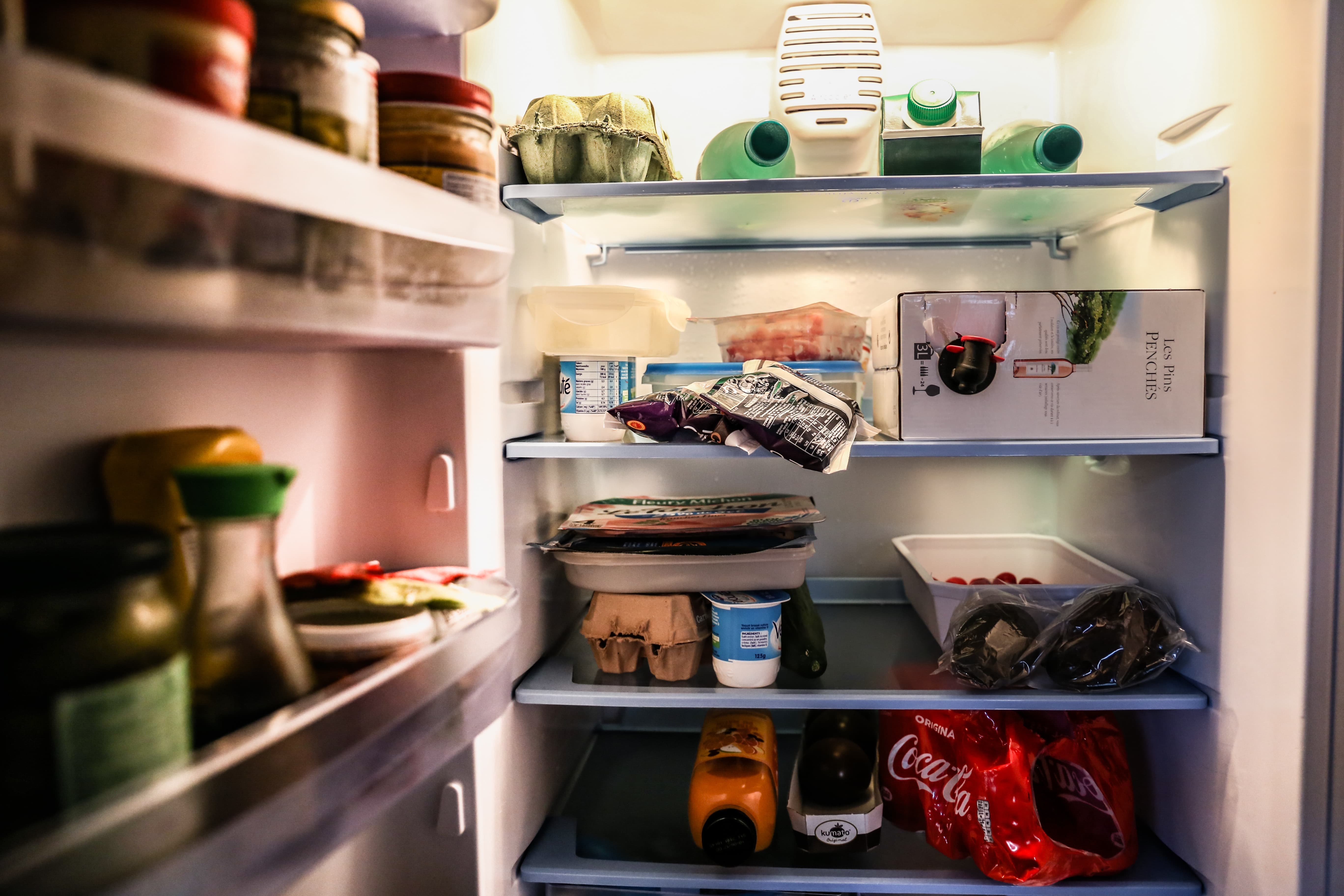I used to be one of those people that couldn’t seem to get myself organised in the kitchen and failed miserably at any kind of meal planning.
We would go shopping whenever we got around to it, usually once a fortnight, and walk out with $200 or more of groceries for two people and still end up ordering more take-out than we felt we should. We had our grocery list, but there was no real plan in place which meant we often ended up buying a lot of things on impulse once we hit the stores.
The end result was that our pantry, fridge, and freezer were always overflowing. Our disorganisation was costing us big on our grocery budget. We rarely had a complete meal planned out and dinner was a stressful event. We found ourselves constantly wasting food at the end of the week that we didn’t get around to eating, along with it our money.
After watching War on Waste and seeing the level of food waste in Australia, I wanted to do more to reduce our household waste. I hated how much food and time we were wasting and wanted to take the stress out of mealtime and save on our grocery budget. I was determined to give meal planning another go with my newfound motivation.
How I got started meal planning
I tried to keep the process as simple and quick as possible. I wanted to be able to do our meal planning as close to on autopilot as possible. Here’s what I did:
- Grabbed an old recipe folder I had tried to use in the past and removed any recipes that I didn’t want
- Organised my recipe folder by category: Vegetarian meals, Soups/Side Dishes, Pizza/pasta, Meat dishes, and Desserts so everything was easy to find
- Photocopied some new recipes from my recipe books and added them to the folder
- Made a master list of about 15 recipe ideas that we loved and had cooked before and listed under the title every ingredient we would need to make that meal. I also included vegetarian versions of recipes for my husband so we could cook the same, or at least similar meals more often.
Keep It Simple
I couldn’t believe the first time we did our meal plan with my newly prepared recipe folder it only took five minutes! Over the weeks I learned what did and didn’t work and came up with some techniques to keep us on track without meal planning goals. Instead of getting stressed over what three meals a day we’d make, we kept it simple.
- We made easy things for breakfast like toast, cereal, or had yogurt.
- For lunch, we brought our leftovers to work, which once we started cooking at home leftovers seemed to be in abundance.
- For dinner, we would cook on the nights we were home and if we were extra prepared, we would make double and save ourselves cooking an extra night the next day.
Of course, we still ate out and bought our lunch occasionally, but we felt so much more organised with our meal planning than we had previously and didn’t feel the need to run and get takeaway. We were prepared.
Beginners Guide to Meal Planning
If you want to try our meal planning for yourself and your family, check out these 5 simple steps:
Step 1. Decide on the meal plan frequency
Decide what planning schedule is most convenient for your family. Do you like to buy in bulk and do a big shop once a month or are you more of a take-it-in small chunks kind of planner? Set your meal plan to weekly, fortnightly, or monthly – whatever suits your pay cycle or shopping preference.
Step 2. Check your schedule
Use this printable, a whiteboard, notebook, or anything else to write down what days you will and won’t be at home to eat for the week ahead. Put a cross on the days you will be out of the house.
Step 3. Assess your meal options
Go through your pantry, fridge, and freezer and check what food you have to work with and what meals you can make from them. If there is something you bought a while back and it is close to expiring put that option on your meal plan now. Check your recipe folder or books for meal ideas for some inspiration.
Pick your meal ideas and write them on the days that you need to cook. Here is a Weekly Meal Planner Printable you can print out and use. Be sure to consider what days you need something easy and quick and what days you might have the time to put on the slow cooker or prepare something a little more time-consuming and plan your meals accordingly. Don’t forget to check your local grocery store catalogs for current specials to save you money.
4. Write your shopping list
Armed with your meals list, check each day and write out a shopping list of what you need to buy to make up those meals. Recheck your pantry, fridge, and freezer to see what you need to get from the shops and leave out anything you already have at home. You are only buying the ingredients to fill in the gaps in your recipe. Don’t forget to be creative and think outside the box. If you don’t have mince in the freezer maybe you can make some vegetarian tacos this time instead.
And most importantly, only buy what you need for your allocated meal period, if it is a week only buy food to use up over the next 7 days. If you do end up buying extra because some items were on special, make sure you use them up in the next week’s meal plan and spend less on next week’s budget.
5. Stick to your shopping routine
Make a new habit of shopping for your list on the same day. It might be every Thursday night or every second Sunday afternoon. Try to stick to a routine with your shopping so you know exactly what you need to shop for and when. Avoiding hitting the shops multiple times a week will save you on unnecessary purchases.

Start saving money today with your Weekly Meal Planner Printable!
Meal Planning Tips:
Here are some extra meal planning tips that will help you on the way!
• Include your family in the meal planning process. There is nothing worse than planning a meal only for everyone to complain about it on the day, after all your effort planning, shopping and cooking. Perhaps you can give everyone a choice once a week of what they’d like on the menu to keep everyone happy.
• Put a reminder in your phone for when you do your meal planning so you don’t forget to do it.
• Keep a master list of recipes and ingredients close to your kitchen or office so you can quickly glance at the ingredients for your favorite meals when making your shopping list and avoid forgetting anything!
• Keep your meal plan in sight, such as on the fridge or your command center so everyone can see it. This will also avoid the ‘what’s for dinner’ question every day 😉
• Avoid overcomplicating your meal plan. Don’t feel like you have to plan a month in advance, just stick to a week if that is easier for you. Stick to 10-15 simple recipes that you can cook on a rotation and save the new or more time-consuming meals for special occasions or times when you have the energy and motivation to cook something more exciting.
This week’s question: Do you meal plan at home? What tips do you have to make the process even simpler? Please share your tips and tricks in the comments below 🙂
If you found value in this post I would be super appreciative if you could share it with others who might also find value in it 🙂
![]()




